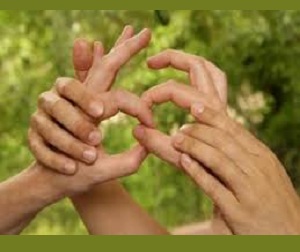 Sign language is part of everyday life in the world. The date is a unique opportunity to support and protect the linguistic identity and cultural diversity of all deaf people and other users of sign language.
Sign language is part of everyday life in the world. The date is a unique opportunity to support and protect the linguistic identity and cultural diversity of all deaf people and other users of sign language.
According to the World Federation of the Deaf, there are currently 72 million deaf people on the planet. More than 80% live in developing countries and as a group they use more than 300 different sign languages.
In a statement regarding the International Day of Sign Languages, the UN notes that the date is a unique opportunity to support and protect the linguistic identity and cultural diversity of all deaf people and other users of sign language.
In 2020, the World Federation of the Deaf will announce the World Leaders Challenge, which aims to promote the use of sign language by local, national and world leaders in collaboration with national associations of deaf people in each country, as well as with other organizations run by deaf people.
The statement highlights that sign languages are natural languages for all intents and purposes, structurally different from spoken languages.
There is also an international sign language that is used by deaf people at international meetings and, informally, when traveling and socializing. This international language is considered a Pidgin language , that is, a mixed language created from a given language plus other elements from one or more other languages.
International Sign Language is less complex than Natural Sign Languages and has a limited lexicon.
Pidgin: Mixed language, created on the basis of a certain language and with the contribution of numerous elements from another or others, which are used especially in commercial enclaves by speakers of different languages to interact with each other. (Dictionary of the Spanish Language, RAE)
The Convention on the Rights of Persons with Disabilities, adopted in December 2006 and which entered into force in May 2008, recognizes and promotes the use of sign languages. It establishes that they have the same status as spoken languages and obliges States parties to facilitate the learning of sign language and promote the linguistic identity of the deaf community.
The convention, opened for signature in March 2007, recorded the highest number of signatories to a UN convention on its first day in the body’s history.
It is the first comprehensive treaty related to human rights in the 21st century, and was achieved after decades of work to change attitudes and approaches towards people with disabilities: from “objects” of charity, medical treatment and social protection to “subjects” with rights – capable of claiming those rights and deciding in their lives based on their free and informed consent – and acting as active members of society.
The General Assembly proclaimed, in resolution A / 72/439, September 23 as the International Day of Sign Languages (proclaimed by the GA in December 2017 and celebrated for the first time in 2018) in order to raise awareness about the importance of these for the full realization of the human rights of deaf people.
This United Nations body establishes that early access to sign language and services in this language, including quality education in that language, is vital for the growth and development of deaf people and is decisive for the achievement of sustainable development goals.
It also highlights the importance of preserving sign languages as part of linguistic and cultural diversity. It also emphasizes that when working with deaf communities, the principle of “nothing about us without us” should be considered and applied .
The proposal for the celebration of this international day was made by the World Federation of the Deaf, which brings together 135 national deaf associations, representing approximately 70 million deaf people around the world.
September 23 was chosen as the commemorative date because it was the date on which the World Federation of the Deaf was established in 1951. This day marks the birth of an organization whose main objectives are the preservation of sign languages and deaf culture as prerequisites for the realization of human rights of deaf people.
(With information from UN)